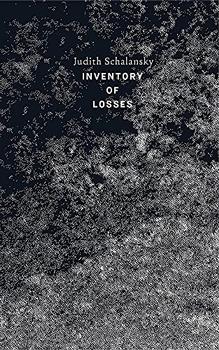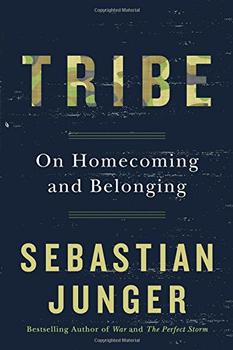Summary | Excerpt | Reviews | Beyond the book | Read-Alikes | Genres & Themes | Author Bio

A History of Life and Death
by Jill LeporeMy expectations for this new collection of essays from New Yorker contributor Jill Lepore stemmed from the book's grand title. I envisioned a series of short introductions to different philosophies, of primarily religious nature, that concern themselves with the beginning of life and afterlife. What I found was, paradoxically, both more complex and simpler. Lepore's essays rely on mundane artifacts and obscure stories to bring attention to how Americans contend with matters of life and death, and questions about immortality and morality.
As one would expect from a Harvard historian, this collection is quite edifying. However it is not rigidly academic - aiming for engaging cocktail party conversation rather than comprehensive historical assessment. Because Lepore skirts academic debate in favor of pop culture references and a dash of personal narrative, she often opts for telling history through objects, which at times can give a hodgepodge, eccentric feel to the collection as the reader is bounced from board games to breast pumps to the publishing history of E.B. White's Stuart Little.
Though these items at first seem unimportant, each has its own role to play in the overall narrative. For example, Lepore uses breast pumps to illustrate the way social functions have changed over time. Similarly, even something as innocuous as board games show society's evolution and the different ways Americans have contended with life and death. Lepore's selection of these objects is where a little autobiography begins to peek through the factual detail and research, and readers are allowed to get a sense, however faint, of Lepore's experiences that have caused her to reflect on her own mortality. These are the items she has used as a mother, and the books and games she has enjoyed as a child: her subject choices are ones she picked over a lifetime.
Some of the content is expected: the study of cryonics, Margaret Sanger (founder of what is now Planned Parenthood), the euthanasia debate of Karen Ann Quinlan (who lapsed into a vegetative state and was kept alive on a ventilator through the 1970s), but this collection is not idle prattle from Lepore. The connections that she draws between her many subjects are impressive and unusual. To enjoy The Mansion of Happiness, readers need to be willing to tag along with Lepore as she jumps from subject to subject and lingers for a while with each, concentrating the bulk of her assessment on events from the nineteenth and twentieth centuries. At times the material turns morbid, such as when Lepore visits the Cryonics Institute, where legally dead people are frozen in nitrogen. At other times it is quaint, like where she explores a short history of children's librarians. Within these pages she comes across as an everyday historian, accomplished and so confident of her grasp on American history that she is willing to make bold parallels.
The Mansion of Happiness is not for the budding historian who is looking for the authoritative edition on American life and death; it is instead, for the naturally curious who want to explore something new with the help of a thoughtful essayist like Lepore. Each of the ten essays concentrates around a particular period or aspect of life and can be read in isolation without losing a larger, all-encompassing value. "Happy Old Age," for example, is ultimately an exploration of William James and other Harvard psychologists who studied aging. I find this sort of literary piecemeal wonderful: there are sections I could photocopy for a friend, and other portions I could bookmark for my grandmother.
As she acknowledges in her introduction, a book about life and death is by definition somewhat flawed because it is virtually impossible to examine everything that has been said on the matter: a writer could go on, in Proustian fashion, forever. Lepore doesn't attempt to take on the magnitude of her subject, but she cherry-picks the people and moments that intrigue her, and shows them to be worthy subjects that reflect the heavier questions that are often attributed only to religious or spiritual thought (as I made the mistake of assuming). In this way, her collection is decidedly contemporary, personal in its content selection and meticulous in its pursuit of the reason why many of us find these questions to be permanently engaging. While she does not build these questions to grand conclusions, she does offer suggestions and thoughts that leave the reader in the same contemplative mindset that likely led Lepore to writing this book in the first place. It reads very much like a good conversation with a shrewd, witty woman, which is all that can be asked of such a book.
![]() This review was originally published in The BookBrowse Review in August 2012, and has been updated for the
April 2013 edition.
Click here to go to this issue.
This review was originally published in The BookBrowse Review in August 2012, and has been updated for the
April 2013 edition.
Click here to go to this issue.

If you liked The Mansion of Happiness, try these:

by Judith Schalansky
Published 2021
Each disparate object described in this book - a Caspar David Friedrich painting, a species of tiger, a villa in Rome, a Greek love poem, an island in the Pacific - shares a common fate: it no longer exists, except as the dead end of a paper trail.

by Sebastian Junger
Published 2016
We have a strong instinct to belong to small groups defined by clear purpose and understanding--"tribes." This tribal connection has been largely lost in modern society, but regaining it may be the key to our psychological survival.
Only when we are no longer afraid do we begin to live
Click Here to find out who said this, as well as discovering other famous literary quotes!
Your guide toexceptional books
BookBrowse seeks out and recommends the best in contemporary fiction and nonfiction—books that not only engage and entertain but also deepen our understanding of ourselves and the world around us.